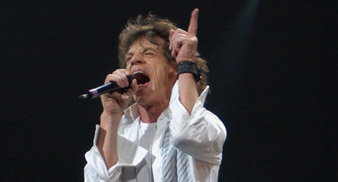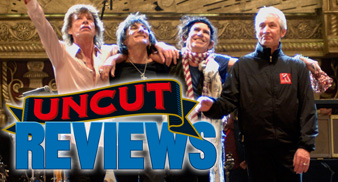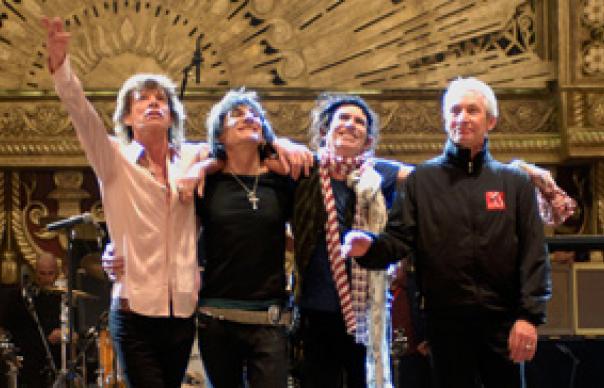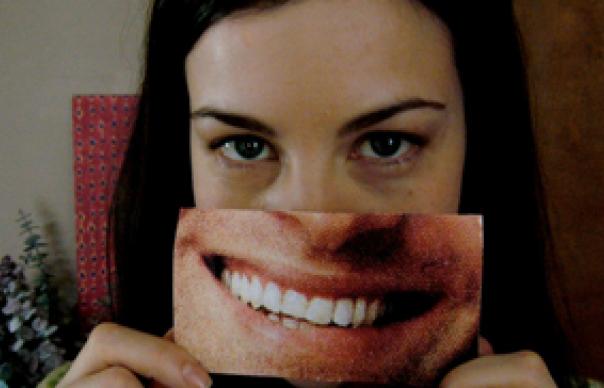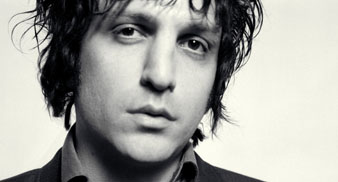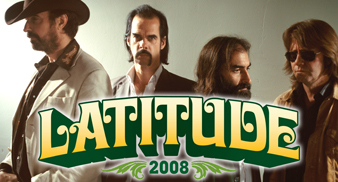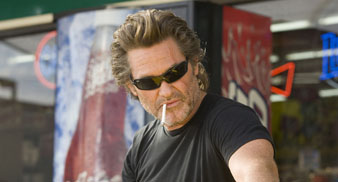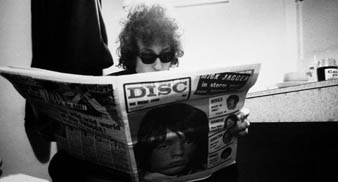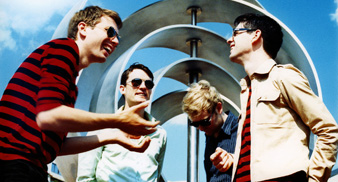Excuse me for hijacking my own film blog to write about TV, but the first episode of Series 4 of the rebooted Doctor Who, "Partners In Crime", has just aired on BBC1.
In fact, I've been mulling over blogging about the return of Doctor Who for a while. If official reports and frenzied Net chatter are to be believed, we're moving towards the end of some deep-rooted ongoing narrative from series producer Russell T Davies of the type we're really not too accustomed to seeing in British TV drama but is, certainly, a familiar staple of American shows. From The Sopranos to Heroes, The Wire and Battlestar Galactica -- another show that's similarly been rescued from retro kitsch TV hell. And anyway, those Last Five Minutes of tonight's episode are arguably worth blogging about alone. Rose! Yes! Really!
I guess, first, I should probably say something about my own relationship to Doctor Who. Growing up in the Seventies, my Saturday TV viewing was governed principally by the exploits of Tom Baker, as highly charismatic a figure as you'd find on the box during that or any other era, who played The Doctor during what you might call the show's golden years. I remember watching, open-mouthed, Jon Pertwee regenerate into Baker in 1973, when I was about 4, and being blown away, having no real reference point for such an event -- TV characters, in those days, were always played by the one person, before the miracle of successive actors playing the same role became a sort of accepted norm, particularly in soaps, and anyway I was barely on solid foods when Patrick Troughton previously transmogrified into Pertwee.
I think that was pretty much when I first realised that there was something different, I suppose, about Doctor Who -- that's even beyond, certainly, the reality-crunching idea of a chap travelling through time and space in a blue box fighting a colourful array of aliens and such like. Those early Baker adventures were wonderful -- a kind of rich, Gothic horror ran through stories like "Pyramids Of Mars", "The Talons Of Weng Chiang", "The Brain Of Morbius", "The Deadly Assassin" that, basically, helped fuel my childhood imagination.
I drifted out of Doctor Who as the creative spark dwindled. Peter Davison had some good stories -- "Kinda", "Terminus", "The Caves Of Androzani". But I'd pretty much given up by the time Colin Baker took over, and though script editor Andrew Cartmel tried to restore some kind of mystery to the show during the Sylvester McCoy-era with adventures like "The Curse Of Fenric" and "Ghost Light", I'd moved onto other things. Girls, Britpop, films, mostly; something approximating the start of a career.
But the childhood resonance of Doctor Who drew me back when Davies' relaunched the show in 2004. Christopher Eccleston was, I thought, a fantastic choice to play The Doctor. He did mug a bit too much in those early episodes (I don't think he's a particularly good comic actor, and Davies' scripts do tend to amp up the comedy) but by the time that first series was coming to a close, with stories like "The Empty Child" calling to mind the creepy horror of Old Who, and as the facts about the destruction of all his fellow Time Lords became clearer, he brought a ruefulness and reflectiveness to the part that, for a show which, in the fag end of its initial run had become a groanathon of wobbly sets and atrocious guest appearances from the likes of Hale and Pace, felt pretty groundbreaking. And certainly, the casting of Eccleston as a Saturday evening, family viewing TV hero was, in itself, quite subversive.
Which brings us on to David Tennant, who I've increasingly warmed to. He's got a certain infectious charm, even if he's still slightly annoyingly when he gets over-excitable. Actually, I like more what Davies does with the companions than The Doctor. By necessity, and according to template, The Doctor is a bag of quirks -- Troughton's recorder, Pertwee's frilly shirts, Baker's scarf and jelly babies, Davison's, um, celery, and thusly on -- so Tennant does Whacky because it's part of the job description.
But what Davies has cleverly done is amped up the relationship between the Doctor and his companions. So, critically, the first episode of Series 1 of the relaunch was called "Rose" -- our way into this fun-packed, alien-filled universe was through a shop assistant from a London council estate played, in an inspired and unexpected piece of casting, by Billie Piper. While back in Old Who, the companions came and went, with barely a mention after their departure, here they're equipped with families, relationships, back stories. With Rose came a mother, a boyfriend and a dead father (hey, stay with me here...).
In one of New Who's best stories, "School Reunion", we caught up with Sarah-Jane Smith, one of the most popular Old Who companions, and scriptwriter Toby Whithouse showed us the effects of what happens to them, once they stop travelling with The Doctor, the trauma of readjusting to a "normal" life, how the colour just leaches out of the world. The scene where Sarah-Jane and The Doctor meet properly for the first time in nearly 30 years was emotionally charged, Sarah-Jane close to tears, stunned, saying: "I thought you died, you never came back, I waited for you and you didn't come back and I thought you died..."
And now, in the last five minutes of "Partners In Crime", here comes Rose Tyler. Rose left, in case you didn't know, at the end of Series 2, stuck forever, 8 million of us thought, on a parallel Earth, a tearful farewell said on a beach called Dårlig ulv stranden, Bad Wolf Bay, in Norway, The Doctor burning up a sun -- a sun! -- so that Rose could tell him she loved him, an emotional display you'd never get in Old Who, something, then, that shifted considerably the dynamic between the leads into previously uncharted territory, great TV drama by any standards. Since then, there's been Martha Jones (Freema Agyeman, a good actress whose part was under-served by the writing team), whose love for The Doctor was, post-Rose, sadly unrequited. Now we've got Donna Noble (Catherine Tate, fortunately less annoying than she was in the 2006 Christmas Special) joining the show full time. There was a glimpse of that "What happens when The Doctor leaves" thing, too, her life since her debut in "The Runaway Bride" a little less than Technicolor after The Doctor's departure.
"Partners In Crime" wasn't, admittedly, one of the best stories in the series -- an outer space supernanny fostering alien children was, like previous season openers "Rose", "New Earth" and "Smith And Jones", just a vehicle to sashay a new dynamic into the show.
And then along came Rose. Just there, at a crash barrier, seen initially from behind as Donna, who doesn't know her, tells her something in passing, then Rose turning to face the camera, the camera following as she walks off, vanishing into the air like a ghost, back, presumably, to her parallel Earth, foreshadowing events we assume will come later in the series. It was brilliant, heart-stopping, reinforcing the impact Piper had as Rose, reconnecting with those moments on Bad Wolf Bay -- "Am I ever going to see you again?", "You can't" -- throwing up a pile of questions I'm going to have to wait 13 extremely long weeks for answers to. I like Rose a lot, she was funny and smart and a bit goofy and brave and held her father's hand when he died back in 1987 and absorbed the time vortex from the heart of the TARDIS to destroy 500,000 Daleks and save The Doctor's life: "I can see everything, all that is, all that was, all that ever could be... My head is killing me."
Sure, quite why Davies has chosen to bring back Rose is currently one of those mystery-in-enigma-moments -- we're told the season finale will feature Rose, as well as Martha, Sarah-Jane, Torchwood's Captain Jack Harkness plus assorted members of Rose's extended family. Daleks, too, and possibly their creator, Davros. That Series 4 will resolve the outstanding storylines for all these characters, sparking some kind of reboot for the Specials next year, no proper Series 5 until 2010, so Tennant can go and play Hamlet at Stratford; and, yes, I've got tickets.
Whatever Davies' masterplan, the four series arc hints as being as much about the companions as it is The Doctor, and in the end, it's probably more about Rose and The Doctor -- specifically in that order -- than anyone else.
So, that's my Saturday nights sorted out until mid-June. Yes, welcome back, Rose Tyler, it's good to see you again.





